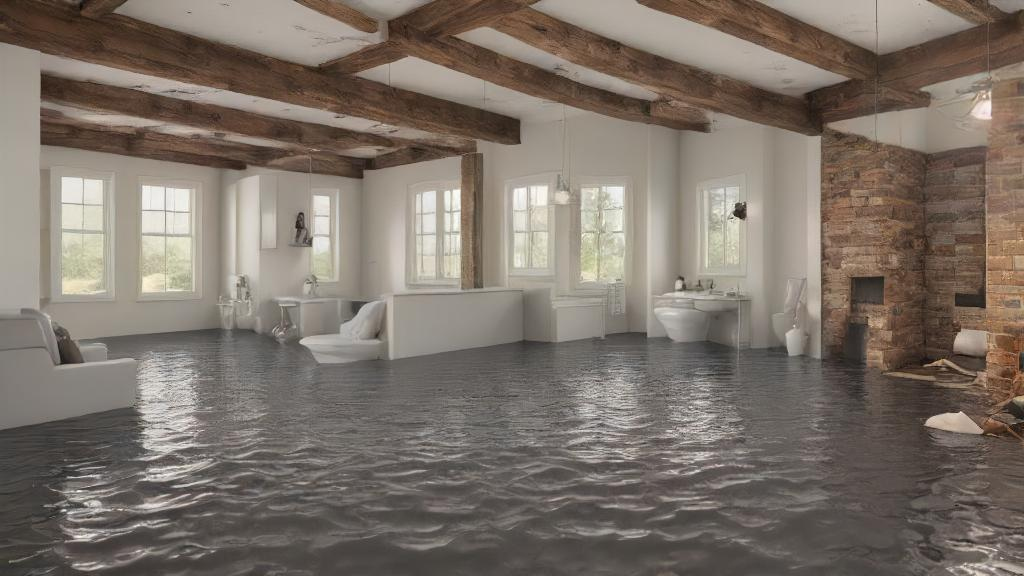Water, the elixir of life, can become a destructive force when it intrudes your home or business. A burst pipe, overflowing appliance, or even a heavy rainstorm can wreak havoc, leaving behind a trail of soaked carpets, warped floors, and potential mold growth. In the face of such devastation, water damage restoration becomes crucial. This guide equips you with the knowledge and steps to navigate the restoration process effectively, minimizing damage and restoring your property to its pre-loss condition.
Understanding Water Damage:
Water damage comes in various forms, each requiring specific restoration approaches. Here’s a breakdown of the common categories:
- Category 1: Clean Water: This refers to water from broken pipes, melted ice, or overflowing appliances. It’s generally considered the least harmful type.
- Category 2: Grey Water: This originates from dishwashers, washing machines, or toilets containing minimal contamination.
- Category 3: Black Water: This is the most hazardous type, originating from sewage backups, floodwater, or sources containing organic material. It poses significant health risks and requires professional remediation.
Also Read: Water Damage Restoration Denver: Protecting Your Home from Disaster
The Restoration Process: A Step-by-Step Guide
- Immediate Action:
- Stop the Source: The first priority is to stop the water flow at its source. Turn off the water supply valve for a burst pipe or unplug malfunctioning appliances.
- Minimize Further Damage: Contain the water by removing rugs, furniture, and valuables from the affected area.
- Safety First: If dealing with electrical hazards, turn off the main power supply. Wear protective gear like gloves and boots when handling contaminated water.
- Water Extraction and Drying:
- Professional Help: For extensive water damage, especially from Category 2 or 3 sources, hiring a water damage restoration company is crucial. They possess specialized equipment for efficient water extraction and drying.
- DIY Approach (For Category 1): For smaller incidents with clean water, DIY methods might be manageable. Use towels and a wet/dry vacuum cleaner to remove standing water.
- Promote Drying: Increase air circulation by opening windows and doors. Use fans and dehumidifiers to expedite drying and prevent mold growth.
- Assessment and Cleaning:
- Professional Assessment: A restoration company will assess the extent of damage, identify affected materials, and determine the appropriate restoration procedures.
- Cleaning and Sanitization: Once the area is dry, thorough cleaning is essential. This may involve using disinfectants and antimicrobials, particularly for Category 2 and 3 water damage.
- Content Restoration: Salvaging belongings is a priority. Professionals can clean and restore carpets, furniture, and other contents affected by the water damage.
- Restoration and Reconstruction:
- Damage Repair: Depending on the severity of the damage, repairs might be necessary, such as replacing drywall, flooring, or damaged structural components.
- Reconstruction: In severe cases, reconstruction might be required, involving rebuilding walls, floors, or other structural elements.

Choosing a Water Damage Restoration Company:
Selecting a reputable and qualified restoration company is crucial. Here are some key considerations:
- Licensing and Insurance: Ensure the company is licensed and carries proper insurance to cover any potential liabilities during the restoration process.
- Experience and Certifications: Look for companies with experience in handling similar water damage situations and relevant certifications from industry organizations.
- References and Reviews: Check the company’s online reputation, read customer reviews, and request references from past clients.
DIY vs. Professional Restoration:
While DIY water damage restoration might seem like a cost-saving option for minor incidents with clean water, there are significant advantages to hiring professionals:
- Expertise and Equipment: Professionals possess specialized equipment and expertise for efficient water extraction, drying, and complete restoration.
- Mold Prevention: Improper drying can lead to mold growth, a serious health hazard. Professionals can effectively assess and prevent mold issues.
- Insurance Coverage: Many insurance policies cover water damage restoration costs. A professional restoration company can handle the insurance claim process on your behalf.
Preventing Future Water Damage:
Taking preventative measures can significantly reduce the risk of future water damage:
- Regular Maintenance: Regularly inspect pipes, hoses, and appliances for leaks or potential weaknesses. Ensure gutters and downspouts are clear to properly divert rainwater away from your foundation.
- Invest in Leak Detection Systems: Consider installing leak detection systems that can identify and alert you to potential water leaks early on, minimizing damage.
- Be Prepared: Have a plan in place for water emergencies. Knowing how to turn off the water supply valve and having readily available water-absorbing materials can be helpful during unexpected incidents.
Also Read: Water Damage Restoration Orlando FL
Conclusion
Water damage restoration can be a stressful and overwhelming experience. However, by understanding the process, taking immediate action, and potentially seeking professional help, you can minimize damage and restore your property. Remember, acting quickly and choosing the right restoration path are crucial for a successful recovery.










